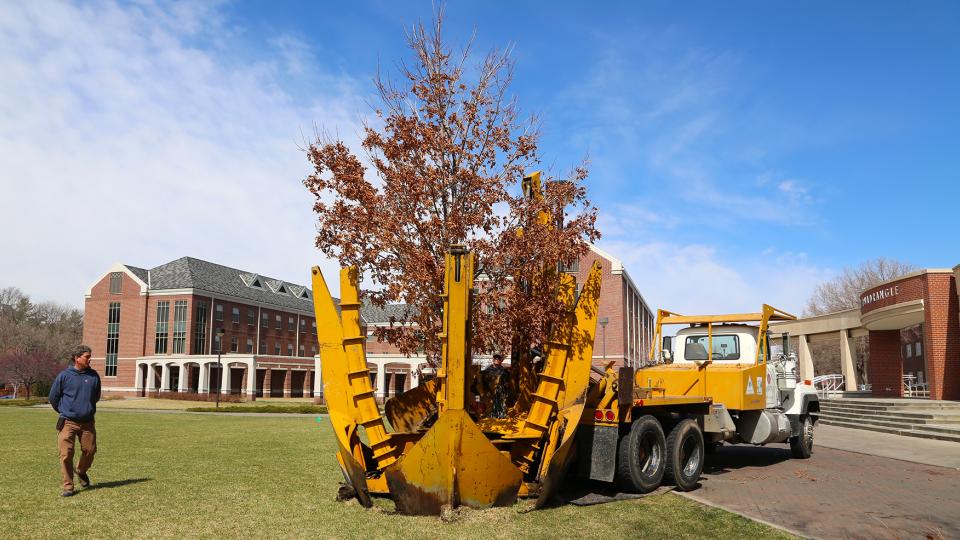
Nearly 20 of UNL's unique and historically significant trees are putting down roots in new locations across City and East campuses.
The arbor shift, which started in January and peaked during spring break, is part of an effort to relocate trees that meet certain criteria — ranging from uniqueness to size — away from campus construction zones.
"Moving trees always feels better than cutting them down," said Eileen Bergt, assistant director of landscape services. "This is something we try to do whenever possible as it allows us to preserve some of UNL's more important trees and enhance the campus landscape."
Memorial trees — those planted in honor of individuals with UNL ties — are relocated whenever possible. Other factors that determine if a move is possible include the type of tree, size, uniqueness, history, overall value and time of year.
"We primarily try to only move trees in early spring and late fall," Bergt said. "We will move them at other times if conditions allow. The important part is limiting the amount of stress you put on a tree."
Weather conditions allowed a linden tree planted in memory of Ray Coffey to be moved out of the Love Library construction zone and into the nearby Donaldson Garden.
Other relocated trees — like four Table Rock sugar maples moved during spring break from the new College of Business Administration construction site to the greenspace west of Selleck Hall — have historical and research importance.
"These are drought tolerant maple trees — which are very unique — discovered near Table Rock, Nebraska, by retired horticulture professor Bill Gustafson," Ballard said. "He harvested seeds from those trees and grew them in the research fields on East Campus."
Ballard learned about the variety while taking a tree propagation course taught by Gustafson in 2003.
"We talked and ended up planting many of the trees he grew on City and East campuses," Ballard said.
Landscape Services rented a 90-inch tree spade from Hampton Construction for $300 to move the four Table Rock sugar maples on City Campus. Measuring at nearly 6 inches in diameter, the trees were among the largest recently relocated.
"Maples are fairly resilient and easy to move," Ballard said. "Still, it will take these trees four or five years before they really start growing again. They'll use that time to reestablish roots."
Bergt said the extra effort spent to relocate the trees is worth that wait.
"Quite often, new construction on campus results in the removal of trees," Bergt said. "For this CBA project, we've been able to work with the architects and save six large trees that will be a part of campus for generations to come."
— Troy Fedderson, University Communications